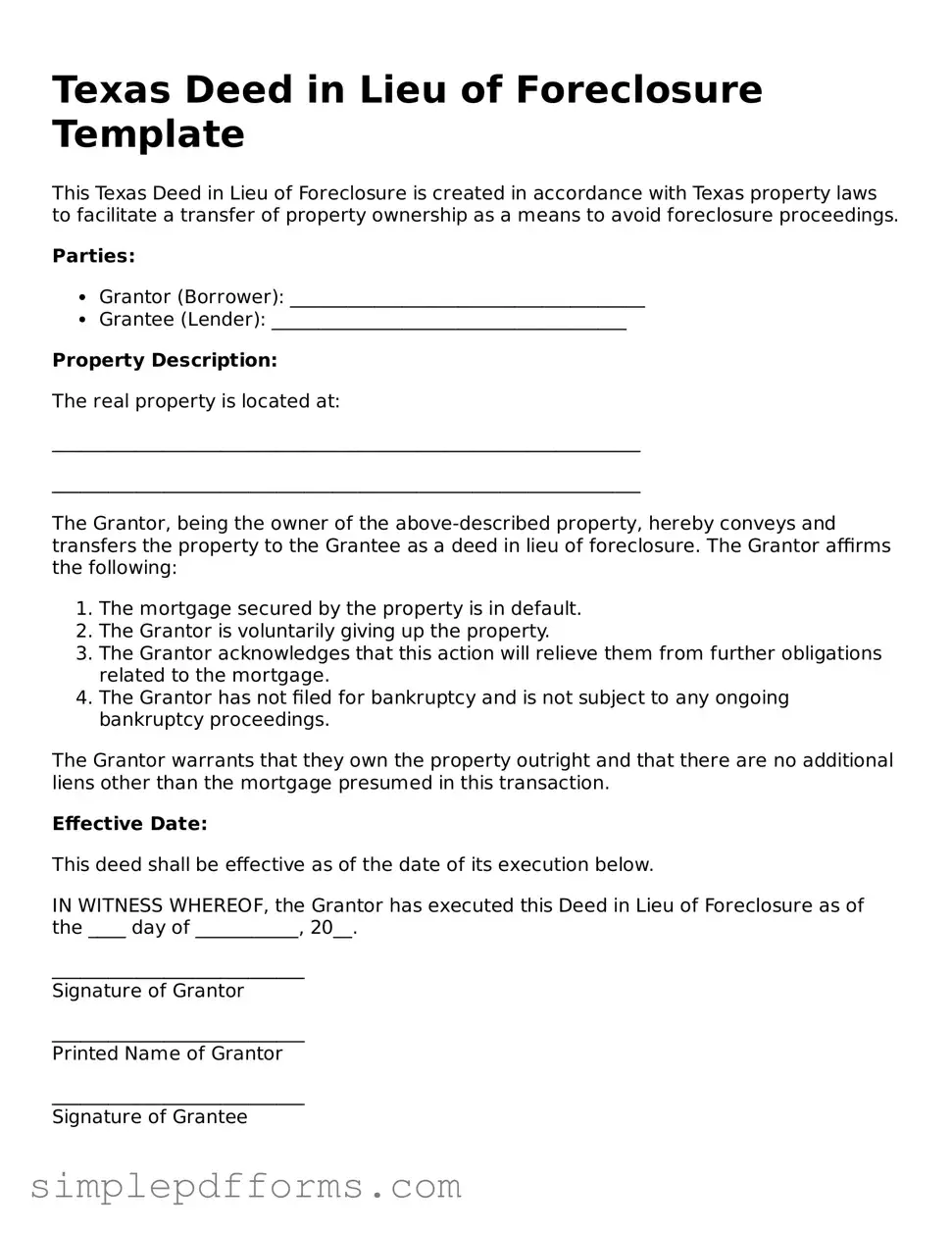Texas Warranty Deed Template
This Texas Warranty Deed is executed under the laws of the State of Texas, in accordance with Texas Property Code Section 5.023.
Grantor: ______________________________
Address of Grantor: ______________________________
Grantee: ______________________________
Address of Grantee: ______________________________
Date of Execution: ______________________________
Consideration: The sum of $________________________.
Legal Description of Property:
___________________________________________________________
___________________________________________________________
State of Texas
County of ______________________
Before me, the undersigned authority, on this day personally appeared ________________________ (Grantor), known to me to be the person whose name is subscribed to the foregoing instrument, and acknowledged to me that they executed the same for the purposes and consideration therein expressed. Given under my hand and seal of office this _____ day of ____________, 20___.
Notary Public Signature: ______________________________
Notary Public Printed Name: ______________________________
My Commission Expires: ______________________________
